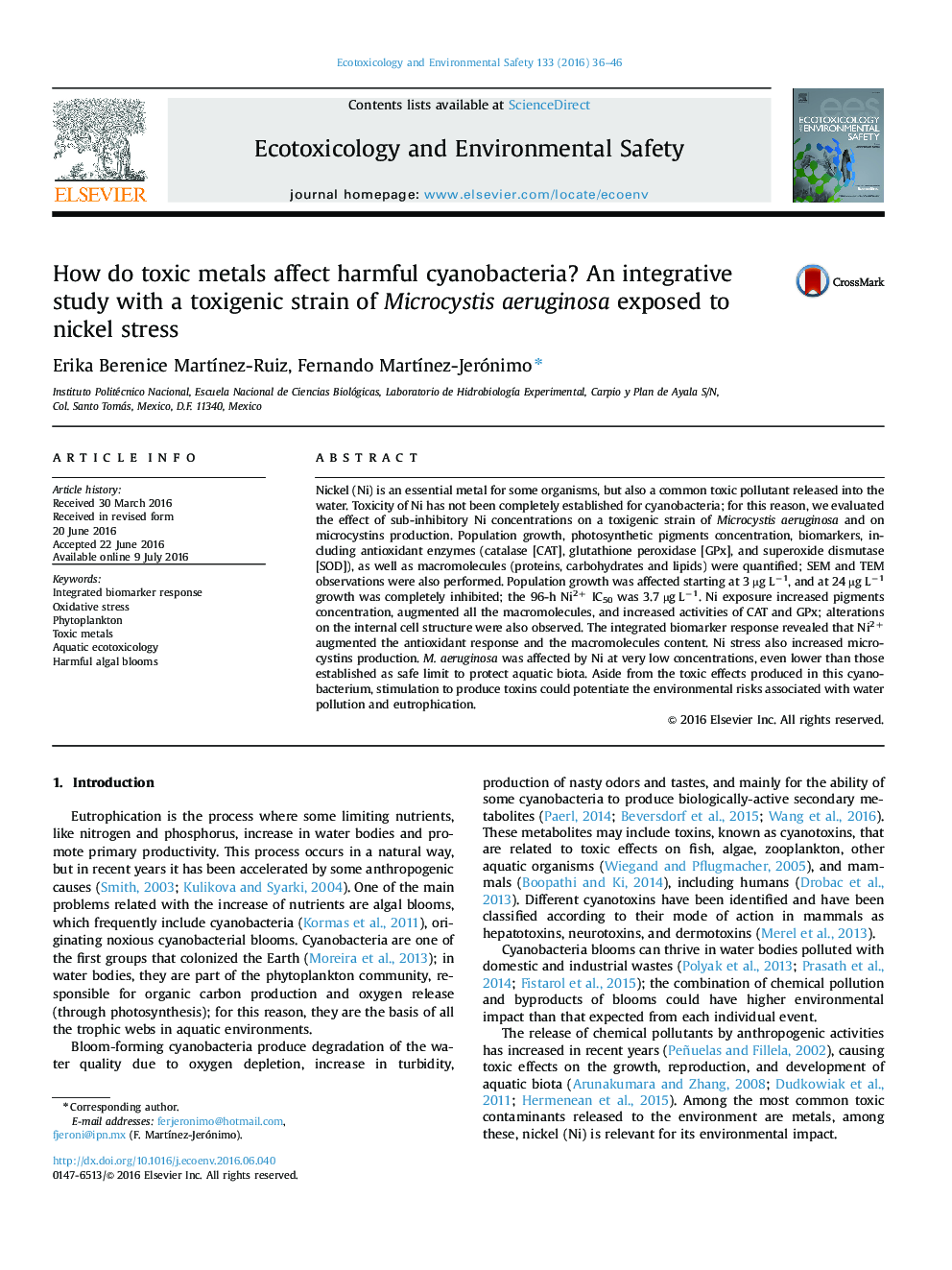| کد مقاله | کد نشریه | سال انتشار | مقاله انگلیسی | نسخه تمام متن |
|---|---|---|---|---|
| 4419008 | 1618930 | 2016 | 11 صفحه PDF | دانلود رایگان |

• M. aeruginosa was highly sensitive to nickel at concentrations above 0.94 µg L−1.
• Sub-inhibitory Ni concentrations increased the intracellular microcystins content.
• Nickel stress increased photosynthetic pigments, including phycobiliproteins.
• IBR evidenced the increase of antioxidant enzymes response.
• At 1.64 and 3.7 µg L−1 nickel produced ultrastructural damages in M. aeruginosa.
Nickel (Ni) is an essential metal for some organisms, but also a common toxic pollutant released into the water. Toxicity of Ni has not been completely established for cyanobacteria; for this reason, we evaluated the effect of sub-inhibitory Ni concentrations on a toxigenic strain of Microcystis aeruginosa and on microcystins production. Population growth, photosynthetic pigments concentration, biomarkers, including antioxidant enzymes (catalase [CAT], glutathione peroxidase [GPx], and superoxide dismutase [SOD]), as well as macromolecules (proteins, carbohydrates and lipids) were quantified; SEM and TEM observations were also performed. Population growth was affected starting at 3 µg L−1, and at 24 µg L−1 growth was completely inhibited; the 96-h Ni2+ IC50 was 3.7 µg L−1. Ni exposure increased pigments concentration, augmented all the macromolecules, and increased activities of CAT and GPx; alterations on the internal cell structure were also observed. The integrated biomarker response revealed that Ni2+ augmented the antioxidant response and the macromolecules content. Ni stress also increased microcystins production. M. aeruginosa was affected by Ni at very low concentrations, even lower than those established as safe limit to protect aquatic biota. Aside from the toxic effects produced in this cyanobacterium, stimulation to produce toxins could potentiate the environmental risks associated with water pollution and eutrophication.
Journal: Ecotoxicology and Environmental Safety - Volume 133, November 2016, Pages 36–46